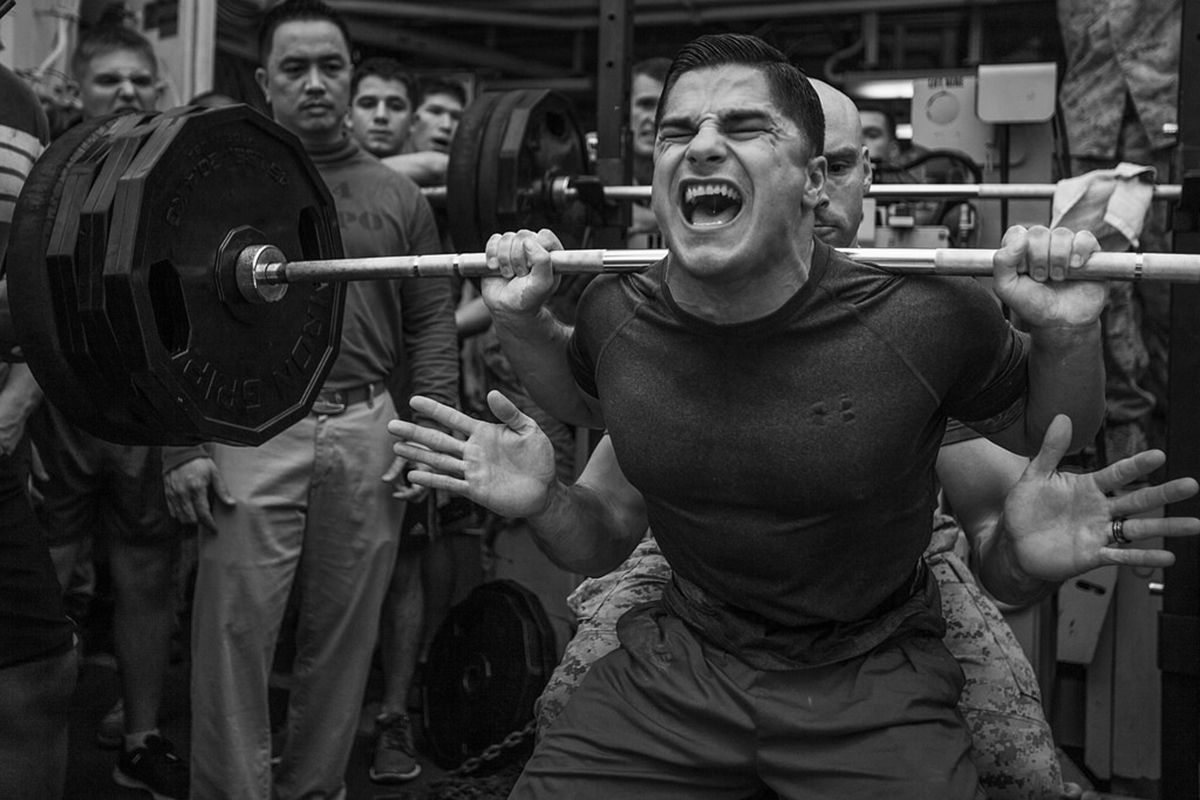Table of Contents
Set up under an empty bar with your feet between hip and shoulder width apart. Put the bar high up on your traps, and use the closest grip you can. It doesn't matter if your elbows wind up behind you as long as your grip is close and your upper back is tight, and a closer grip will help you remember to tense your upper traps to let them act as a cushion to rest the bar on.
Break at the hips, just like a power squat, and lead with the coccyx on the way down. Compared with the power or hybrid squat there's a lot less tension in the hips and low back because the external femoral rotators are doing less work, which allows you to stay more relaxed. Keep your spine long and work to extend it. At the bottom of the lift your hamstrings should be on your calves, but if you're never done this lift before, chances are they won't be. From your bottom position, stand up, fully extending the hips. You'll feel this far more in the fronts of your legs than a power squat.

Better Flexibility For The Oly Squat
As I mentioned above, most people don't have the flexibility for a full Olympic squat. But that can be fixed with gradual improvements.
For the ankles, get into a lunge position with your front shin vertical and your front toes against a wall. Now move your knee forward, trying to get it to touch the wall. Keep your foot 'turned on' and facing forward with a good arch and don't let your knee track sideways.
For the upper back, an area people often struggle with, try getting a basketball and lying on your back with it under the middle of your T-spine, between your shoulder blades. Put your hands behind your head and draw your shoulders up, then try to curve your upper spine backwards, around the basketball. When that gets easy, put the basketball against the wall and do it, then try doing it in lower and lower positions until you're doing the basketball stretch in the bottom of a squat.
For the hips and general patterning, you might find the goblet squat helps more than anything else. Just look it up on YouTube - check out one of Dan John's excellent videos on the subnets.
Exercises For The Oly Squat
The Olympic squat requires the whole body to move as one piece. If you try too build flexibility joint by joint and then do a super-compound movement like this it won't work. You have to fill in the blanks. You need specific drills to build your squat. Here are a couple:
Arm pull: Set up with the bar on the floor. If you deadlift, you can throw a few of these in between sets. Bend at the hips like you are going to deadliest the bar, but with your feet in your O-squat stance. Grasp the bar double overhand, then use your arms and your hip flexors to pull yourself into a full squat. Extend your T-spine and make a high chest, then return to the bend-forward position and repeat.
Hip Flexor Pull: Here's another cool mobility drill you can do at home: Stand in a doorway wight he door open. Put your hands either side of your shoulders and pull yourself down with your hip flexors into your O-squat position, stand up and repeat a few times. Getting too easy? Try putting your hands overhead with your elbows on the side of the doorway that's actually behind you. This will give you a guide for upper back positioning and take away the balance requirement while you learn to squat, letting you focus on patterning.
READ Could Squats Really Be A Low Back Exercise?
The next step is simply to squat, but with light weights. You need to go from learning to squat, to learning to squat with some weight, before you try to actually "work out" with this new movement pattern. So take it easy for the first couple of months - I'd recommend using the first 90 days to stay under 50 percent of your bodyweight or 25 percent of your (best guess at you) 1RM, whichever is lower, and just practice the movement.
If this has been useful, or you think I've left something vital out, or you have a story or a question, please get in touch in the comments section below.
- Mind map by SteadyHealth.com
- Mind map by SteadyHealth.com
- Photo courtesy of U.S. Naval Forces Central Command/U.S. Fifth Fleet via Flickr: www.flickr.com/photos/navcent/13968797815


Your thoughts on this